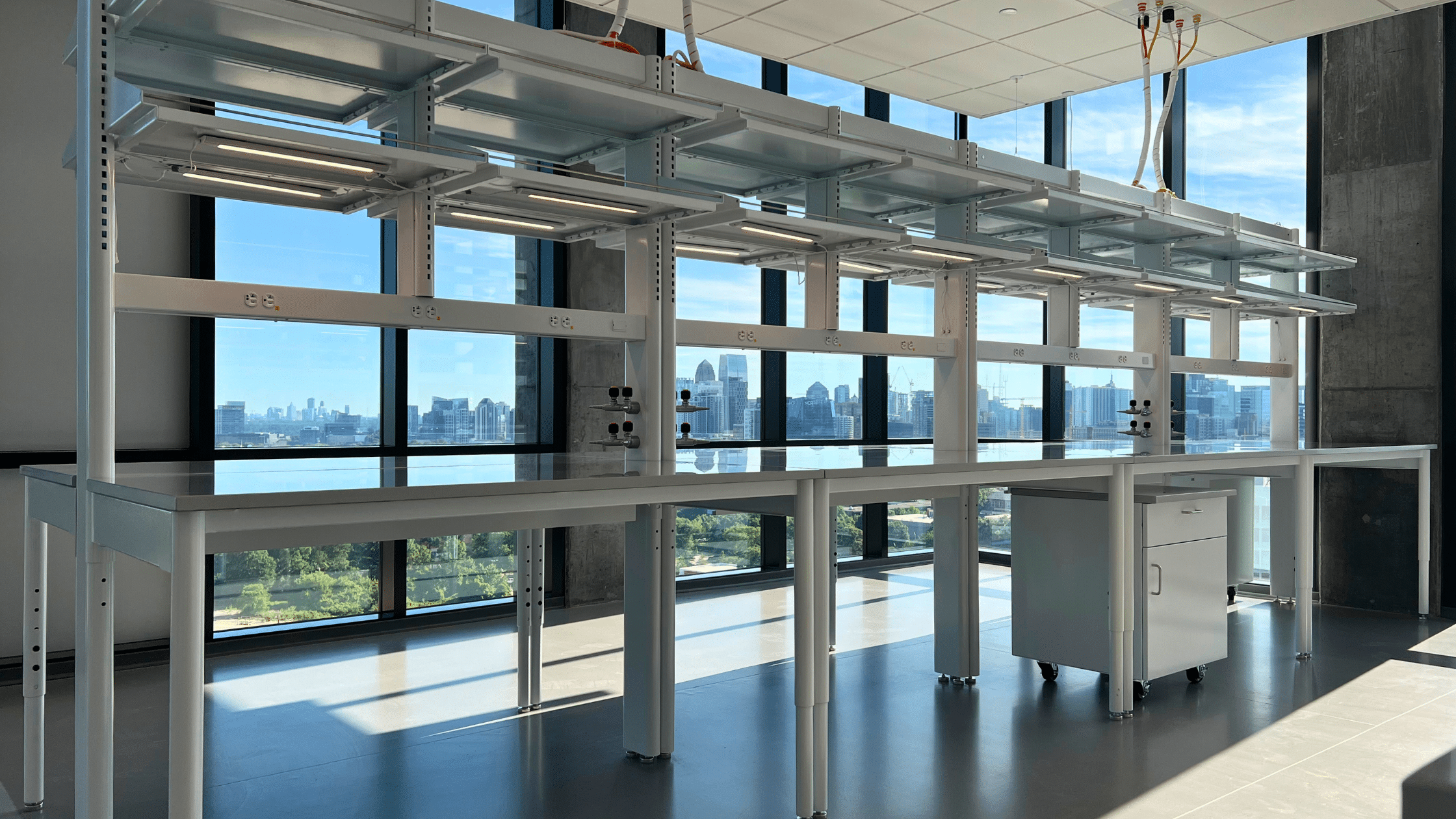Lab benches are a foundational element of any laboratory environment. While they may appear straightforward at first look, their design and selection require a surprising number of considerations. If you want to choose a safe, effective, and aesthetically pleasing bench, you need to weigh all the different factors, from functionality and durability to customization options that support your specific research needs.
Safety
Research facilities often work with dangerous chemicals or undertake hazardous processes. If your lab bench is not strong, stable, or chemically resistant, it could fail under load or during an experiment, potentially causing harm to users.
Cleanliness is also critical and plays a role in laboratory safety. If surfaces aren’t properly maintained, bacteria and other microorganisms can accumulate, raising the risk of contamination and compromising both safety and results.
You can address safety concerns in your lab bench by selecting one that is made from a resilient and easy-to-clean material. The surface should be smooth, with its parts fitted tightly together to avoid sharp edges, and its legs must be appropriately spaced for balance. If the feet are not inherently stable – for example, if your selected bench has casters for movement – they should be lockable.
Practicality
Many of these safety-related factors can also impact the bench’s functional effectiveness. The materials in a quality lab bench need to be both durable and easy to maintain. They should be able to withstand extreme temperatures, pressure, corrosive chemicals, and sharp tools, ensuring optimal function well beyond a single experiment. Stability is a non-negotiable, but mobility matters too. A well-designed lab bench should offer both a functional working surface and the flexibility to relocate when needed.
Other practical concerns include the bench’s size and height, which will affect how well it fits in the available space, whether it is large enough for the necessary work to be carried out, and how accessible it is for users. For ADA compliance, consider benches with adjustable height or open knee space to allow wheelchair access. The accessibility of utilities such as power and water should also be considered.
Your lab’s efficiency can be further improved with additions such as overhead or undercounter shelving or cabinets. Some benches can be combined with various forms of storage, which can often be reconfigured to suit your needs.
Practicality also includes cost-effectiveness. While staying within budget is important, choosing a lab bench based solely on its initial price can lead to problems down the line, especially if the bench doesn’t meet the demands of your work. Investing a bit more in a high-quality, laboratory-grade bench can reduce the risk of early repairs or replacements, ultimately protecting your budget and saving you time and frustration.
Ethical Concerns
In the U.S., reputable manufacturers often follow SEFA and ANSI standards for safety and quality. Still, it’s important to vet your manufacturer’s supply chain for ethical and sustainable practices, especially if products or materials are sourced internationally. This includes knowing where the bench was manufactured and being confident in the different stages of your bench’s production.
Ethical decision making in the lab includes a commitment to sustainable practices. When selecting your lab furniture, it’s important to consider how each product is made, as well as how it performs.
Aesthetics
A research facility cannot operate at its best if the environment is uncomfortable or uninspiring. Aesthetics and practicality often go hand in hand, especially when it comes to lighting and layout. These elements can directly affect the morale and productivity of the team working in the lab. Finishes like laminate or veneer can create a warmer, more inviting atmosphere, while steel and epoxy offer a clean, modern look. Powder coating and other surface treatments also allow for color customization, which can help contribute to a more positive work environment.
Conclusion
If you want to create a safe and functional research facility that encourages productivity and is an innovative and inspiring place to work, choosing your lab furniture carefully is essential.

 USA
USA  India
India 

